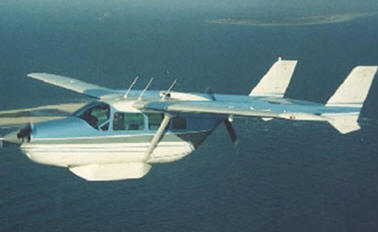|
|||||||||||||||||
|
|
|
|||
|
11 Million Verdict
Against Winner Aviation For Negligence Resulting In Plane Crash By Jim Douglas |
||||
 |
December 18, 2011 - One of the largest air crash
disaster verdicts was handed down on Wednesday, by a
Philadelphia jury, which awarded $11.35 million in
compensatory damages to Dr. Robert Marisco Jr. and his
fiancee Heather Moran, both of Akron, Ohio, in an action
against Winner Aviation Corporation. Dr. Marsico and Ms.
Moran were represented by the Wolk Law Firm in
Philadelphia.
On
August 8, 2007, Dr. Marisco, a dermatologic surgeon, and
Ms. Moran, a professional pilot, were flying back to
Ohio in Dr. Marsico's private airplane, a Cessna T337G,
N969CB, when shortly after takeoff from DeKalb-Peachtree
Airport in Georgia, on a hot day, after the airplane was
about 10 miles from the departure airport, the rear
engine failed for undetermined reasons. |
|||
|
The pilot
turned the airplane back toward the airport, feathered the rear
engine, and maintained front engine power at the top of the
green arc of the manifold pressure gage, at 33 inches of
manifold pressure.
At the
time of the engine failure, the pilot estimated the airplane was
1,000 to 1,500 feet above the ground, and between 2,700 feet and
3,000 feet above mean sea level (msl). GPS indicated a small
airport about 6 miles away, but the pilot felt the larger
airport they had just departed, about 10 miles to the south,
would be better due to emergency equipment and a control tower.
The pilot
then began a gradual turn back toward the south, and while doing
so, asked the passenger to verify rear engine switch positions.
She then attempted an engine restart, and when it was
unsuccessful, she contacted DeKalb-Peachtree Tower and advised
the controller of the situation.
|
||||
|
The pilot also
noted that the front engine rpm was 2,650, power was "to the top of the
green," the fuel flow was "right," and "everything was in the green as
far as the front engine is going." However, "it just was not keeping us
at a safe altitude to get back to the airport." The pilot made an
approach to the "green area" of a water plant, cleared a transmission
line, reduced power and lowered the landing gear. Her memory after that
was not clear, but she did recall the passenger waking her up, and her
subsequently assisting him in getting out of the wreckage.
The "Single-Engine
Maximum Rate-of-Climb Data Chart" found in the owner?s manual indicated
that the airplane, at maximum gross weight, and at 5,000 ft MSL, should
have been able to climb about 290 feet per minute with the ambient
temperature conditions that existed at the time.
Dr. Marsico's
twin-engine Cessna Skymaster airplane was maintained for several years
by Winner Aviation, an aviation repair facility based at
Youngstown-Warren Regional Airport in Ohio. Dr. Marsico purchased the
Skymaster (which has an engine in the front and one in the rear) in 2006
and selected Winner Aviation as the facility to conduct the FAA-required
yearly inspections and all necessary repairs and maintenance.
At trial, Ms.
Moran and Dr. Marsico claimed, among other things, that Winner Aviation
never undertook repairs or overhauling of the rear engine that were
necessary to keep it in an airworthy condition. Ms. Moran and Dr.
Marsico further alleged that Winner Aviation's misdiagnosis of the
recurrent problems of "power loss" in the rear engine was compounded by
an alleged failure to have an appropriate inspector investigate all work
that was being performed by its mechanics.
Ms. Moran and Dr.
Marsico also alleged that Winner Aviation was aware that the front
engine was long overdue for a complete overhaul, but never recommended
an overhaul to Dr. Marsico. Ms. Moran and Dr. Marsico argued at trial
that the failure to overhaul this engine or, at the very least, perform
a proper inspection and repair of its valve guides and other engine
parts, caused a diminution of power during an in-flight emergency,
precisely when full power was most important.
The lawsuit
against Winner Aviation was tried in the Philadelphia County Court of
Common Pleas, and the jury found that Winner Aviation was negligent and
breached warranties in its inspection, maintenance, and repair of the
Skymaster and that this misconduct was a direct cause of the crash. The
damages awarded to Dr. Marsico and Ms. Moran are to compensate them for
the medical expenses, physical and emotional pain they have endured
since the crash and into the future, as well as damages for their
disfiguring and disabling injuries.
"This is a
bittersweet conclusion to a long, hard fought battle with one of the
region's largest aviation repair facilities," one of the attorneys for
Dr. Marsico and Ms. Moran, James Lebovitz said. "The outcome of this
case demonstrates that a citizen's constitutional right to a trial by a
jury of her peers is alive and well. |
|
|
| blog comments powered by Disqus |
 |
| ?AvStop
Online Magazine
Contact
Us
Return To News
|
|

